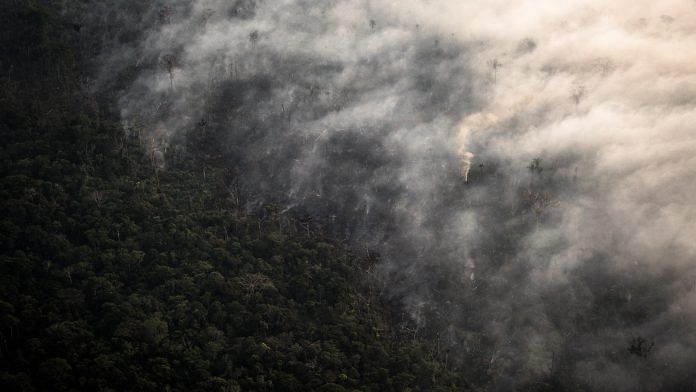Amazon forest fires melting glaciers in the Andes
Fires in the Amazon rainforest are melting glaciers in the Andes, located 1,000 miles away.
A study, published in the journal Scientific Reports, has shown that soot from the fires in Brazil, Peru and Bolivia increased melting in the Andes by up to 14 per cent a year.
Soot deposits on glaciers cause the ice to darken and reflect less light, which speeds up melting. More on The Independent.
Sumatran rhino is now officially extinct in Malaysia
The last-known Sumatran rhino in Malaysia died this week, making the species now officially extinct in the country. The 25-year-old female rhino was suffering from cancer.
Earlier this year, the last known male Sumatran rhino died, putting an end to hopes for the survival of the species in the country. Less than a hundred Sumatran rhinos are now believed to exist. Habitat loss and poaching have pushed the species into the critically endangered category. Read more on BBC.
609 million-yr-old fossils may be world’s oldest animal embryos
Scientists have identified what may be the oldest ever fossils of animal embryos, dating back to over 609 million years. These tiny specks may bring new insights into our understanding of evolutionary history.
These tiny fossilised clusters of cells, known as Caveasphaera, were found in south China. The researchers, including those from the Chinese Academy of Sciences and the University of Bristol, published a paper, arguing that these remains are embryos of early animals.
However, some experts suggest that these tiny fossils could be animals that “no one has ever seen before”. Read more on The New York Times.
New image offers a close-up view of an interstellar comet
Scientists have revealed a new image of the interstellar comet 2l/Borisov, which continues to draw closer to Earth.
First spotted this summer, the comet will reach its closest approach to Earth in early December. Researchers say the comet was ejected into interstellar space as a consequence of a close encounter with a planet in a far-away stellar system.
The scientists added the image of Earth to give an idea as to how big the comet would look alongside our home planet. Read more on Yale News.
Also read: Tesla unveils futuristic Cybertruck, and the most dangerous plague returns to China



